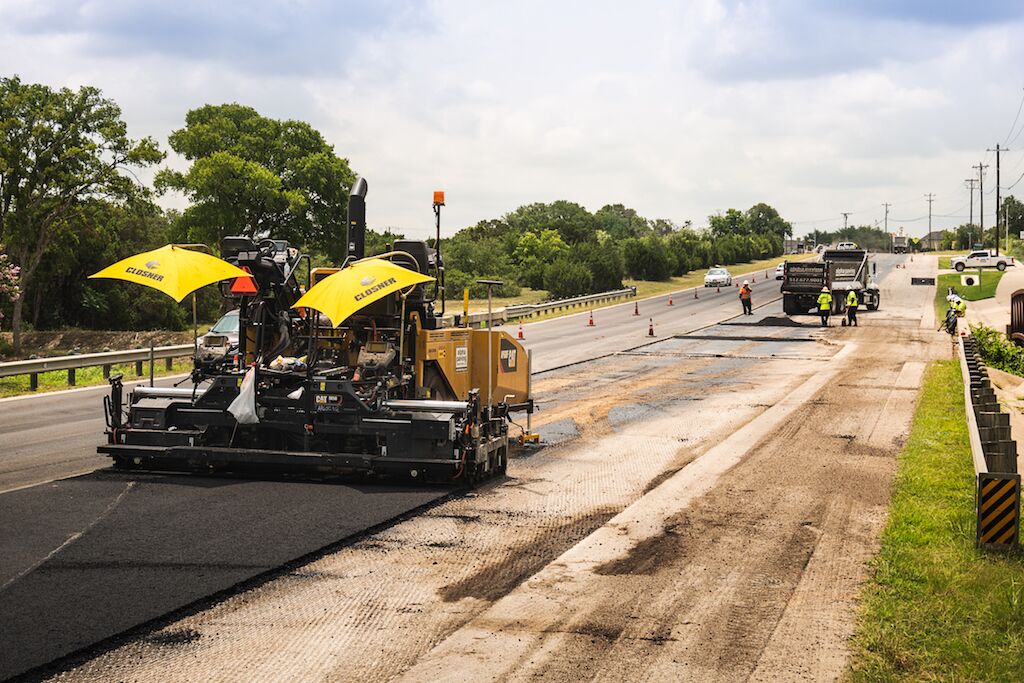The A1 Professional Asphalt & Sealing Llc PDFs
The A1 Professional Asphalt & Sealing Llc PDFs
Blog Article
Everything about A1 Professional Asphalt & Sealing Llc
Table of ContentsUnknown Facts About A1 Professional Asphalt & Sealing LlcGetting The A1 Professional Asphalt & Sealing Llc To WorkAbout A1 Professional Asphalt & Sealing LlcNot known Details About A1 Professional Asphalt & Sealing Llc All about A1 Professional Asphalt & Sealing Llc

The oil in a car engine is not simply oil. The REOB contains all the additives that were in the waste oil as well as the wear steels from the engine (primarily iron and copper).
However, by making many blends using different REOB samples and different asphalt binders, the variants greatly can be balanced out. Several States provided samples of known REOB structure to TFHRC researchers, who analyzed the samples to contrast the portion of added (understood) REOB to the discovered (examined) quantity. The analyses revealed a similar percent of included and located REOB.
A1 Professional Asphalt & Sealing Llc Can Be Fun For Anyone
They obtained a frustrating response. The TFHRC scientists examined 1,532 samples from 40 States, one Canadian province, and 2 Government Lands Highway departments. They assessed each example twiceamounting to even more than 3,000 evaluations. None of those States recognized that the asphalt they were acquiring consisted of REOB. One State urged its samples had no REOB.
Of the 1,532 samples examined, 12 percent consisted of REOB, and some included considerably high degrees of it at 1020 percent. The greatest level was 34 percent in a sample from Texas, which TxDOT had actually utilized in a patching compound. This screening also disclosed the existence of phosphoric acid in 11 percent of the samples, and 2 percent had ground tire rubber.
Two years ago at TRB's yearly meeting, the Federal scientists held an REOB workshop and presented the searchings for of their laboratory evaluations to a standing room-only group. Although some companies do not especially prohibit REOB, they do enforce physical tests that avert its useeffectively a ban. a1 professional. Others do not prohibit it by spec, but have arrangements with asphalt providers to stay clear of using REOB
Some Of A1 Professional Asphalt & Sealing Llc
A handful do permit REOB, some within particular limits. For instance, Ohio and Texas limit levels to less than 5 percent of the asphalt. To create a reputable examination technique that all States can utilize, the TFHRC scientists established up a round-robin examination strategy. The participants are 11 State freeway agencies (Illinois, Massachusetts, Minnesota, Mississippi, Montana, North Carolina, Oklahoma, South Carolina, Texas, Vermont, and Wyoming), 2 independent testing labs, the Ministry of Transport in Ontario, Queen's College in Ontario, and an Ontario paving professional.
In overall, the researchers prepared and delivered 720 blends. The individuals are checking the samples separately using the guidelines provided by the TFHRC scientists. The round-robin testing is almost completed, and TFHRC remains in the procedure of gathering the results. The output will certainly be a recommended AASHTO test technique that any type of State can adopt and make use of (a-1 asphalt).
The sidewalk with REOB, which lies 0.6 mile (1 kilometer) from the pavement without REOB, has the same subgrade, web traffic thickness, and climate. However, the section of Highway655 with 5 to 10 percent REOB showed considerable breaking. In this instance, the presence of REOB was the determined root cause of breaking at a reduced temperatures.
"In our experience in Canada, also small amounts of 23 percent can be a trouble." Likewise, an area of test pavement in Minnesota (MN1-4) located to contain REOB likewise fractured prematurely. The sidewalk done well for the very first 3 to 4 years, but then began to crack. This pavement is additionally based on low temperatures.
Some Known Facts About A1 Professional Asphalt & Sealing Llc.
The examinations were not substantial, yet they revealed that at levels of 6 percent or more, the tensile toughness of the asphalt went down dramatically. At a degree of 3.5 percent REOB, the variation in the physical test methods was above the result of REOB. It was hard for scientists to evaluate whether REOB was existing. https://a1asphaltseal.edublogs.org/2024/04/20/a1-professional-asphalt-sealing-llc-mastering-asphalt-repairs-and-sealcoating/.

One binder parameter taken into consideration is the difference between the reduced temperature vital specification temperature level for rigidity (S) in the bending light beam rheometer and the flexing beam rheometer creep incline (m-value) noted as Tcritical. 2 independent research study groups, one from AASHTO and the various other from the Asphalt Institute, concluded that even more research is required on the use of REOB in asphalt.
Formerly, all asphalt testing gauged engineering residential or commercial properties such as rigidity. These tests do disappoint what materials had actually been added to the asphalt. One example received throughout the TFHRC study had a really strange evaluation. The sample had the complying with examination results: Superpave PG 64-28 with a high temperature level grade of 67.3 Tcritical on the flexing light beam rheometer was 6.7 degrees Celsius.

The Best Guide To A1 Professional Asphalt & Sealing Llc
These outcomes show there are weaknesses in the standardized engineering screening procedures that may be made use of. The producer might have a financial benefit and the product passes all the standardized examinations, however the product might not be beneficial to making certain lasting performance. To resolve this concern and the growth of new asphalt ingredients and extenders, TFHRC is beginning a research program to use portable spectroscopic gadgets, x-ray fluorescence spectroscopy, and Fourier transform infrared spectroscopy to make it possible for analyses view to be done in the area rather than needing to take samples back to the laboratory.
Report this page